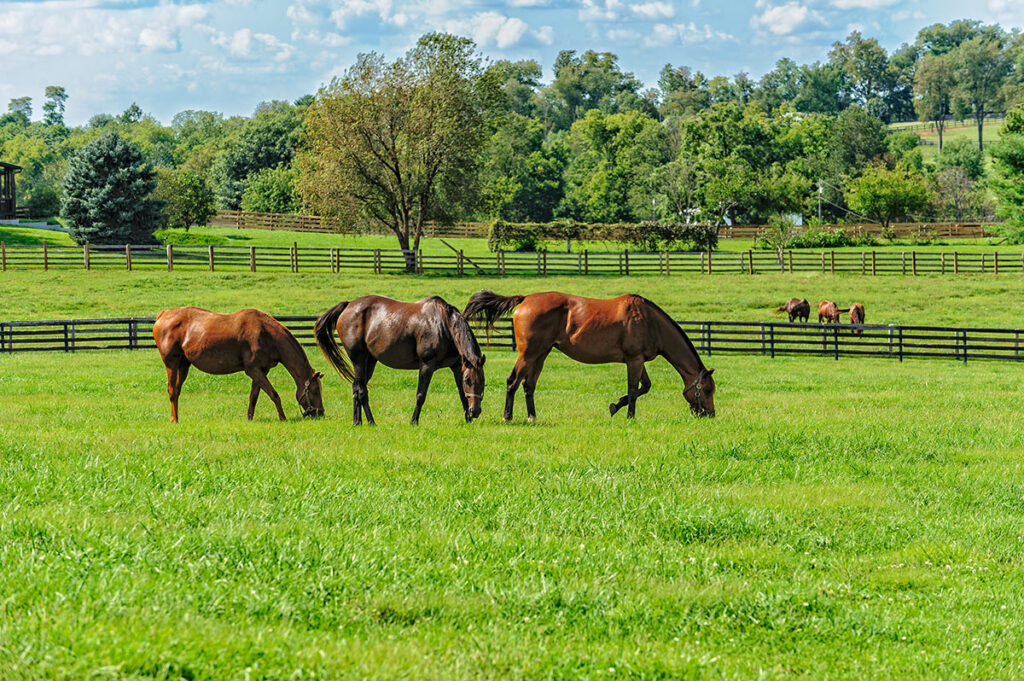
As we transition to spring, our thoughts often turn to pastures and what they can provide horses. Pasture can offer many benefits for horses, owners, and caretakers alike. However, to reap the benefits, pastures must be managed properly.
Quality of Pasture
Pasture is one of the most often overlooked and inexpensive nutrient sources for your horse. A good- quality pasture can meet the nutritional requirements of many horses, including those in light work and even broodmares during much of the year. Pasture quality depends on a variety of factors, including forage types, the soil’s mineral content, and the forage’s growth stage or maturity.
Proper Management
The person in charge of pasture management should develop a plan for the fields. It is important to develop a pasture management plan that focuses on the types of plants that will be in the field. Usually, this includes a combination of grasses and legumes. Select forages that complement each other based on growth characteristics, which can lengthen the grazing season. The longer horses can meet daily dietary requirements with pasture, the less money you’ll need to spend on other feedstuffs.
Managers should plan how they will keep pastures at optimal grazing height—between 3 and 8 inches for most forages—and determine if dry or sacrifice lots and rotational grazing are feasible on the farm. These strategies can help maintain a quality pasture by minimizing damage when conditions are poor and maximizing utilization by forcing a more uniform use of the field.
Managers should also come up with a yearly pasture management plan. This will include timing of soil testing, fertilizer needs, and timing of application. In addition, managers need to evaluate forage growth, and plan to apply herbicides, when necessary, to control undesired weed growth.
Uses of Pasture
Allowing horses to have access to pasture provides additional benefits beyond nutrients. Turnout, especially when water, shelter, and feeding locations for hay and grain are spaced, encourages free-choice exercise. Young horses benefit from turnout because it promotes bone strengthening, especially when turned out with horses of a similar age. Horses with arthritis benefit from the low-intensity exercise, because it keeps joints from becoming “stiff,” as can happen with stall confinement.
Companionship is another benefit for horses allowed pasture turnout. Horses are usually pastured in groups, which helps fulfill their need for social relationships. Even horses turned out alone can benefit if horses are housed in paddocks nearby and visible.
Take-Away Message
A good-quality pasture can provide several benefits. It can deliver most, if not all, of the required nutrients for many classes of horses, provide the opportunity for free-choice exercise, and decrease the time spent on chores such as mucking stalls.


